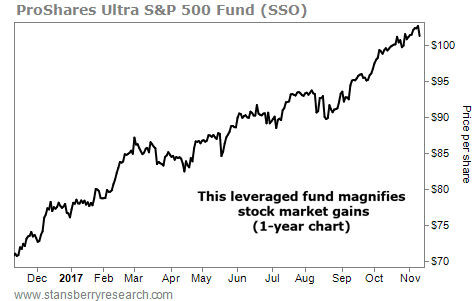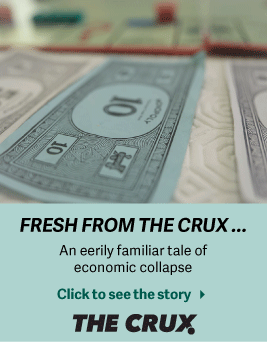| Home | About Us | Resources | Archive | Free Reports | Market Window |
Is This Common Mistake Leading You to Financial Ruin?By
Friday, November 10, 2017
Karl Hill turned $2.9 million into $54 million in seven years.
When I met him in April 2007 at the Grant's Interest Rate Observer Conference in New York City, Hill was in his late 70s.
We spoke briefly after his presentation. His stooped posture, rumpled suit, and southern drawl disguised a deep, well-read, highly curious intellect.
Hill led a storied and accomplished life. But he missed one thing... a classic mistake that gets investors into the worst trouble...
By age 39, Hill had presided as the editor of Boston's Beacon Press, done foreign-management consulting, and even clocked two years with the U.S. Department of Housing and Urban Development before entering a successful career in banking.
Eventually, disappointed with the banking business, Hill looked to the stock market. He invested $2.9 million of his own and other people's money, starting in 2000. By the time he stood before us onstage in New York City, he'd turned that nearly $3 million into $54 million in seven years, a spectacular performance.
As Hill told the audience...
After exiting housing more or less at its top, Hill went whole hog into small-cap Canadian mining stocks due to "the ascendancy of real things from underground [gold, silver, oil and gas, base metals, and uranium] due to the overprinting of fiat money," which he characterized in his Grant's presentation as "the most certain thing in the world today" and "in its infancy." Hill told the audience, "I can't pick stocks." A page from one of his conference handouts was titled, "Big Gains From Tiny Stocks, Selected Randomly Without Knowing Much About Them." Hill invested in stocks based on three premises...
Hill put these three premises together and wound up buying equal-sized positions in hundreds of the smallest-cap stocks in what he called "the most propitious industry." That's how he made so much money in housing stocks. And he planned to do the same with mining stocks.
He multiplied his own and others' money more than 18-fold in less than a decade. It all seemed so simple and powerful. Hill riveted the audience at the Grant's conference, as only the combination of a good story and a stellar track record can do.
Hill spoke as though his success in mining was as certain as his past success in housing. But it was not to be...
He failed to understand that the extremely risky, highly cyclical nature of the mining business trumps macro forecasting and the constant decline in value of paper money. In fact, forecasting is generally the province of fools – though I'd never call such a brilliant, warm, engaging fellow a "fool."
Hill was a philosopher whose philosophy about fiat money and its relationship to gold and gold stocks led him to ruin...
Five months after Hill's talk at the Grant's conference, the stock market peaked in October 2007. Gold stocks peaked four months later. The market crashed in 2008, ruining lots of folks, including those who, like him, had big money in small mining stocks. The VanEck Vectors Gold Miners Fund (GDX) fell 60% from its February 2008 peak to its October 2008 bottom.
At the conference in 2007, Hill handed out Xerox copies of his brokerage statements detailing the huge gains he'd made, including the performance of individual equities, amounts invested, and buy and sell dates. At the time, it was almost charming. Looking back, it was naïve and tinged with hubris.
The numbers on Hill's 2008 losses weren't published anywhere as far as I know, but they were ruinous enough. Despondent over losing his own and others' money (and possibly under the weight of a hereditary suicidal tendency), Hill shot and killed himself on October 25, 2008 at the age of 79. Had he merely held on, it's likely Hill would have made it all back in a year, and even more in another two years, judging by the performance of the big mining exchange-traded funds.
Hill believed gold stocks were a multiyear, one-way bet straight up that even an unfolding financial crisis couldn't stop... based solely upon a top-down thesis he viewed as "the most certain thing in the world."
That was his mistake. Overconfidence leads to a lack of imagination. And an investor without imagination can't see risk until after the damage is done.
Today, you can find other trades that will ruin investors like mining ruined Karl Hill. To avoid them, remember his story – and never fall in love with your macro predictions.
This is what distinguishes a great investor from yet another lucky guy with a great track record and lots of money... walking straight into ruin.
Good investing,
Dan Ferris
Further Reading:
"Instead of relying on predictions, you can be ready for anything in the markets," Dan writes. Forecasting comes with risks. But you don't need to predict the future to make good investing decisions. Learn more here: Five Ways to Prepare for Any Market Environment.
Betting everything on one big idea is dangerous. That's why Dave Eifrig says you should own different areas of the market. This strategy can protect you in times of crisis... Read more here: Investment Protection No One Is Talking About.
Market NotesA FUND AMPLIFYING GAINS FROM THE 'MELT UP' Today, we look at a fund that's tracking the overall market rally – and boosting its gains...
Regular readers know Steve was one of the few to predict that this historic, eight-year bull market would continue soaring this year. He expects stocks will rise dramatically before it all ends, just as they did during the dot-com boom, in a last push that he calls the "Melt Up"... And he says that time is finally here.
One of the simplest ways to take advantage of it is to own U.S. stocks with leverage. And the best way to do that is with the ProShares Ultra S&P 500 Fund (SSO). In short, if U.S. stocks rise 1%, the leveraged fund increases 2%. However, if U.S. stocks fall 1%, the fund also declines 2%. That means SSO is ideal for investors looking to maximize their returns as the Melt Up continues...
As you can see in the chart below, shares are up more than 40% in the past year. They recently hit an all-time high. Watch for this fund to keep soaring as the bull market charges on...
 |
Recent Articles
|



